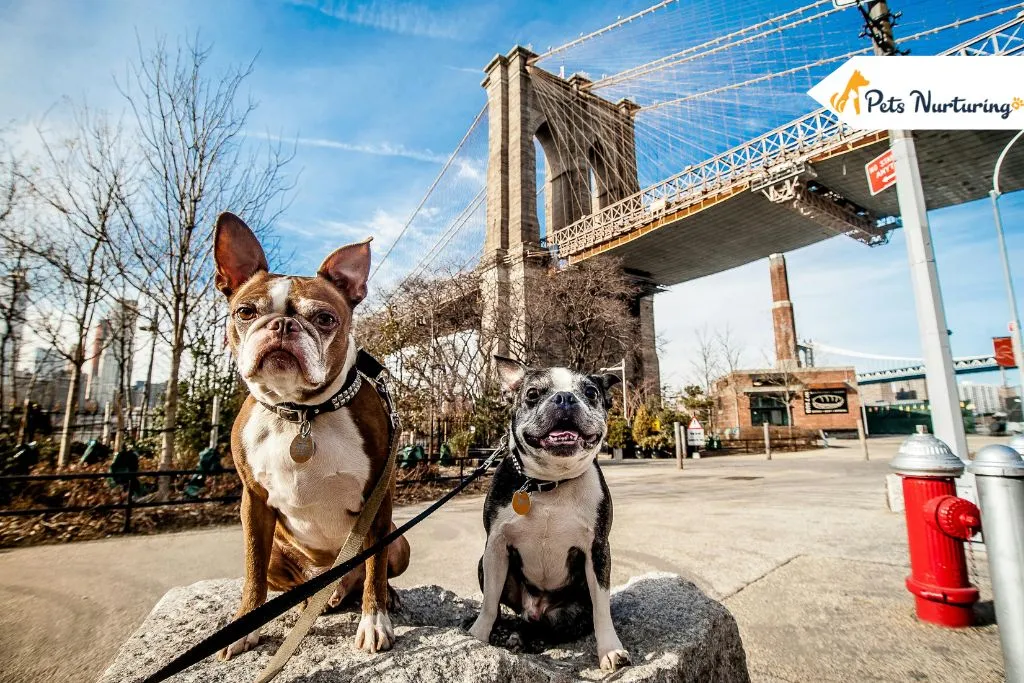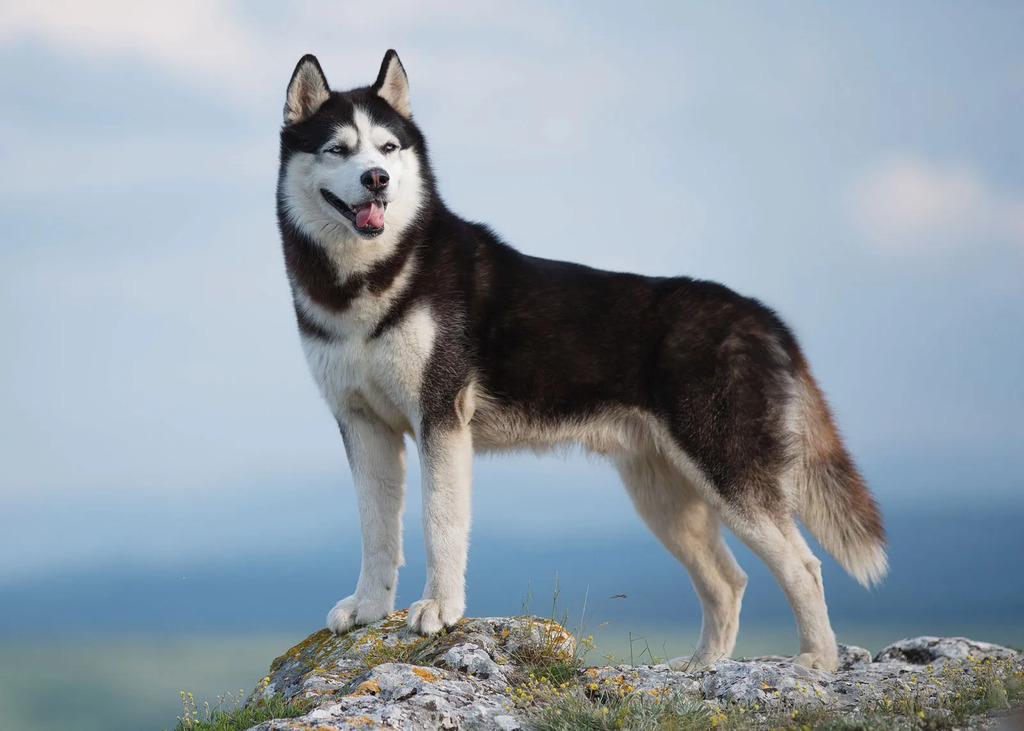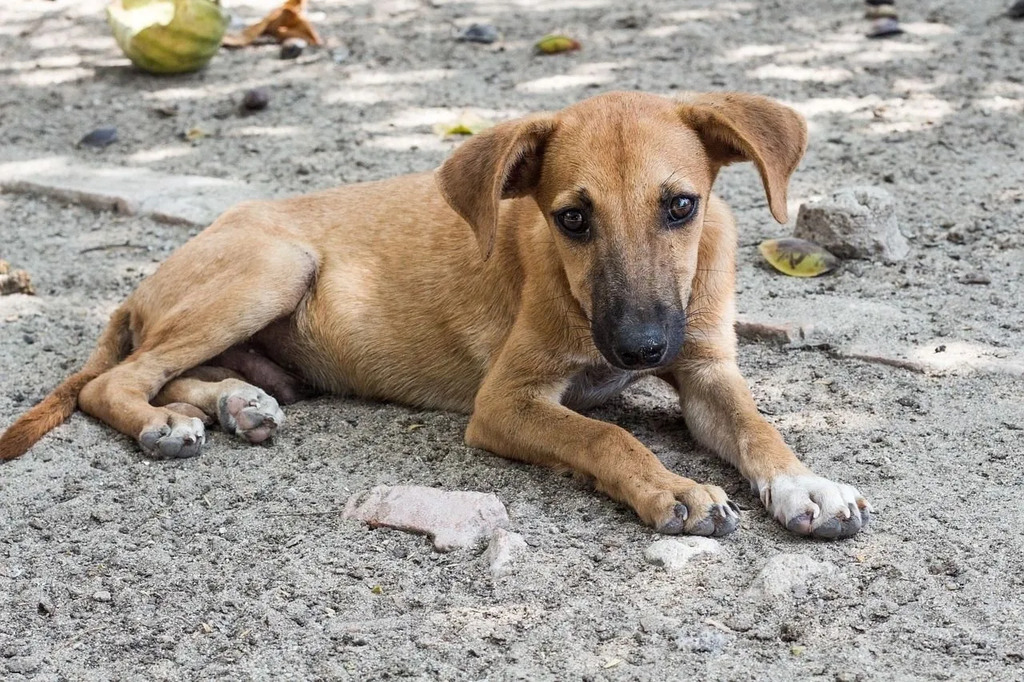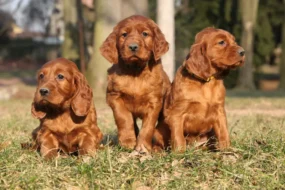
For the human onlooker, cities, and countryside present two distinct pictures: the rush of a bustling metropolis contrasting sharply with the serene spread of the countryside. But what about our four-legged companions? How does the experience differ for a dog navigating through the concrete jungles of a city versus the expansive fields of the countryside?
Let’s delve deeper into the contrasting lives of urban vs. rural dogs.
Urban Canines: The Metropolitan Marvels

Day-to-Day Activities
In the heart of a metropolis, a dog’s day often starts with the sound of alarm clocks, the distant hum of traffic, or the honks from an impatient driver. The day often starts with a walk, albeit on concrete sidewalks, passing by strangers, and perhaps a brief pause at the local park. These city parks, despite their limited space, become the mecca for urban canines, where they play, chase, and socialize.
Meal times are timely, and often after dusk, there’s another walk through neon-lit streets, sometimes accompanied by the distant siren of an ambulance or police car. For many urban dogs, entertainment includes watching through windows, people-watching, or perhaps a toy or two indoors.
Challenges
The urban environment presents challenges that rural canines might never encounter.
– The noise level in cities can be stressful for some dogs, especially those with noise sensitivities.
-Limited space means limited opportunities for off-leash play, leading to pent-up energy.
-The constant exposure to strangers and other dogs requires a good level of socialization; otherwise, a dog can become overwhelmed or reactive.
-With more dogs in close proximity, there’s a higher risk of disease spread.
-Pollution and the constant tread on hard surfaces can lead to respiratory and joint issues respectively.
-There’s also the challenge of navigating through traffic. Owners must be vigilant to ensure their pets don’t dash into oncoming vehicles.
-Limited green spaces might deprive dogs of natural exploration and play.
Joys
However, city life isn’t devoid of its pleasures.
-Urban canines get to meet a variety of people and dogs, making them typically more socialized. Smaller dogs such as Maltese Shih Tzus or Toy Cavoodles breeds can easily be brought to pet-friendly establishments, with many cities offering a wealth of transportation options for pet owners.
-Urban lifestyles often come with routines that can be beneficial for dogs who thrive on structure.
-With proper fencing and leashed walks, there’s less risk of dogs wandering off or encountering wildlife threats.
-Many cities also host dog-centric events, from canine carnivals to doggy day-outs, which are a treat. Plus, the array of pet-friendly cafes and establishments means urban canines are often more integrated into their owner’s social life.
Rural Canines: The Countryside Charmers

Day-to-Day Activities
A rural dog might begin its day with the crowing of a rooster, or the gentle rays of the sun streaming through vast fields. Their morning walk isn’t restricted to a leash on a sidewalk but perhaps a free run through meadows, chasing after butterflies, or playfully nipping at the heels of livestock.
Daytime could involve accompanying their humans on tasks, herding cattle, guarding the farmhouse, or simply lounging under a tree. Evenings might be spent watching sunsets, playing fetch, or simply enjoying the sounds of crickets as the world slows down.
Challenges
Rural life, though seemingly idyllic, has its challenges.
-There are threats from wildlife such as coyotes, which can pose a danger to domestic dogs.
-Depending on the remoteness, access to veterinary care might be limited, making preventive care and vaccinations paramount.
-There might be fewer opportunities for dogs to interact with other dogs, which could limit their socialization skills.
-For working dogs, there’s the physical exertion of day-to-day activities. Tasks like herding, guarding, and hunting demand physical prowess, making injuries more likely. Herd animals can weigh between 300 and 1000 kg – far larger and heavier than any dog. An errant stomp from one of these animals can hurt or maim any dog. As such, these dogs will need to be effective at communicating with and controlling bigger, stronger animals.
-Large properties might be difficult to fence in securely, leading to potential dangers of dogs wandering off.
-There’s also the risk of predators, such as snakes, ticks, and fleas which thrive in rural environments, making it necessary for owners to be vigilant.
Joys
The rural dog enjoys freedom that an urban canine can only dream of.
-Expansive spaces to run, varied terrains to explore from forests to streams, and the joy of being close to nature.
-Less pollution and fresher air can lead to fewer respiratory issues or allergies in dogs.
-The quietness of rural settings can be less stressful, especially for dogs sensitive to loud noises like sirens, horns, and traffic.
-Fewer dogs around might mean a lower chance of diseases like Parvovirus spreading.
-The bond between rural dogs and their owners is often profound, especially if they work together.
-The simple joys of chasing a squirrel, digging without restrictions, or just lying on the grass watching clouds go by are unparalleled.
Conclusion
The urban and rural canine experiences are as contrasting as night and day. Where the urban dog thrives on social interactions and the buzz of city life, the rural dog revels in the expansive freedom and the rhythm of nature. Each has its challenges and joys, shaped by their environment.
Yet, at the heart of it all, every dog seeks the same things: love, care, and a fulfilling life with their human. Whether amidst the skyscrapers of a city or the vast landscapes of the countryside, it’s the bond with their human that truly defines the quality of a dog’s life.
Explore Further:











